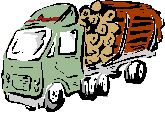INFORMATION ABOUT THE CHAMPION LANDS DEAL

Application to Vermont Housing & Conservation Board
November 2, 1998
Governor Dean's letter re: Deed restrictions
January 28, 1999
Sources and Uses of Funds
Transcripts of Testimony before Legislative Committees
January 21, 1999
February 10, 1999
February 12, 1999
February 16, 1999
Legislation
House Bill H.130 (from 1999)
Senate Amendments to H.130 (from 1999)
Enabling legislation as passed
Announcement of change in easement language
Corrected easement
Legislative History
NRA legislative alert 1/29/02
H.567
H.575
S.275
Champion Lands language in Budget Adjustment Act, H. 646
The Disposition of the Champion Lands
THE PLAN
The entire Champion property is 132,000 acres
1. 84,000 acres (Essex Timber) -- 63.6% -- Timber management.

This land is protected with a forest easement that includes a 'forever logging' provision that requires any future owner to harvest at least half of the annual net growth on the property. Such a protection for logging does not exist elsewhere in Vermont. There will be expansion of equestrian use, beyond what existed when Champion owned the land.
2. 9,500 acres State and 26,000 acres Federal land -- 26.9%-- Wildlife management.

Active management for game and other wildlife species. Some timber will be harvested as a secondary use.
Vermont Department of Fish and Wildlife Mission Statement - 2001-2005 --
"The mission of the Vermont Fish and Wildlife Department is the conservation of all species of fish, wildlife, and plants and their habitats for the people of Vermont. To accomplish this mission, the integrity, diversity, and vitality of their natural systems must be protected."
The mission of the U.S. Fish and Wildlife Service is to work with others to conserve fish and wildlife habitats for the benefit of people.
3. 12,500 acres -- 9.5% -- Ecosystem management

There are many species which require or benefit from mature and non-fragmented forests. Many species have higher productivity in areas of mature older forest with complex structure, including dead standing and down large tree trunks (e.g. coarse woody debris), patchily dense shrub and sapling vegetation beneath a closed canopy with few edges. Roads (vehicles) are also a tremendous source of mortality for a wide variety of species from Wood Turtles and Spotted Salamanders to Screech Owls. The species that need more attention are the vast majority of non-game species, some of them rare, some not. Very little land has been managed specifically for them. Opportunities to establish mature non-fragmented forests governed by natural processes are rare and they will become more so. This is an unusual opportunity to practice ecosystem management in addition to traditional timber and game management.
Final West Mountain Wildlife Management Plan
Summary of the Plan for the West Mountain Wildlife Management Area
Area Map
Additional Information
e-mail exchanges between VCE and VT Outdoors Magazine
